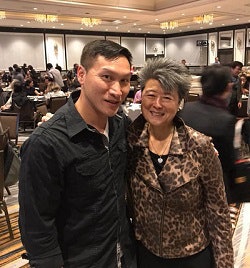Ke Lam has witnessed the following scenario play out more than a dozen times over the past two years:
Recently released from prison, the person boards the San Francisco Bay Area mass transit train known as BART, joining a sea of unfamiliar people who are juggling phones and briefcases. The formerly incarcerated person’s knuckles turn white, his hand tight around the grab bar. Lam tells the person, whom he accompanies on his first public transit trip after exiting prison, to close his eyes, take deep breaths and try to ignore the crush of commuters.
“After spending many years in a tiny, confined space, every car on a BART train is a scary little box,” says Lam, who was incarcerated for 20-plus years. “It’s like a prison cell — but moving. After keeping at least five feet between you and other people when you’re inside, you easily get panic attacks on BART because so many strangers are in your personal space.”
Helping people transition back to society has become a mission for Lam and others who work for and volunteer with the Oakland, California-based Asian Prisoner Support Committee (APSC).
Founded in 2002, the APSC is one of the few organizations in the country dedicated to providing culturally competent services to Asian Americans and Pacific Islanders (AAPIs) who are incarcerated and formerly incarcerated. The organization, led by formerly incarcerated AAPIs, works primarily with the San Quentin and Solano state prison populations and the re-entry population in Oakland and nearby.
Mass incarceration might seem a ridiculous concept when juxtaposed against the “model minority” myth that suggests that AAPIs are highly educated, wealthy and upwardly mobile. But the statistics are stark:
During this country’s prison boom in the 1990s, the AAPI prison population skyrocketed 250 percent, while the overall prison population grew by only 77 percent, according to a study published in Amerasian Journal in 2005. The most populous AAPI ethnic groups in California prisons nowadays are Vietnamese at 22 percent, Filipinos at 20 percent and Pacific Islanders at 10 percent.















